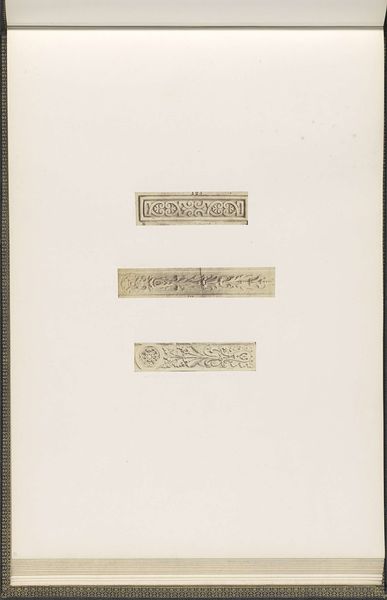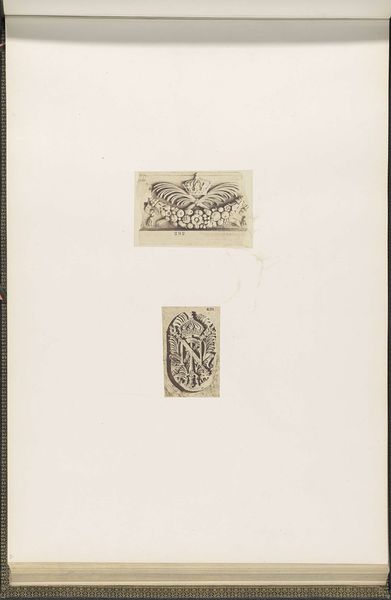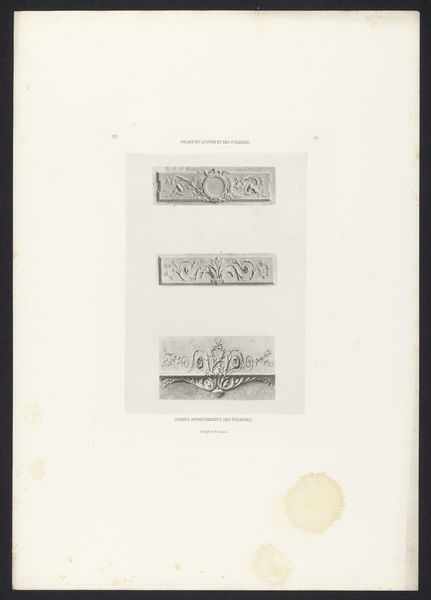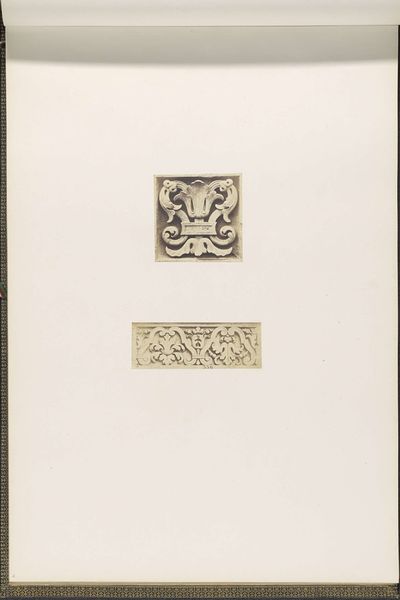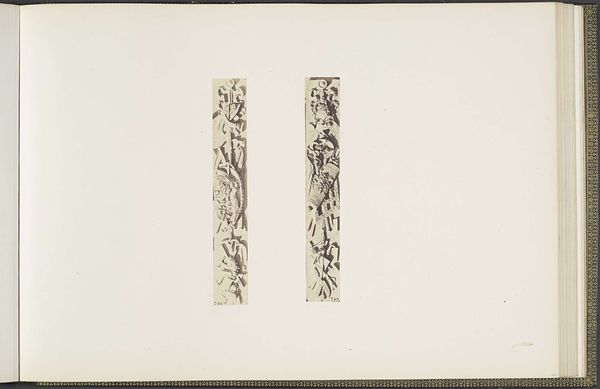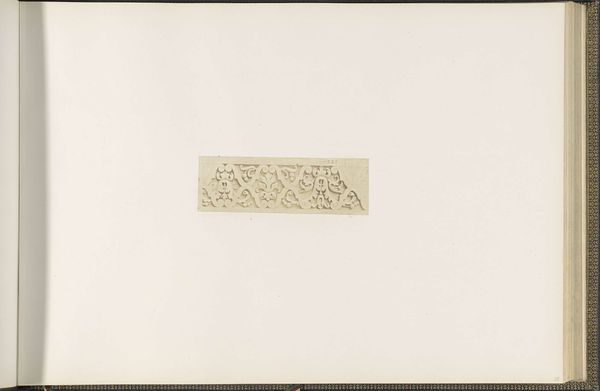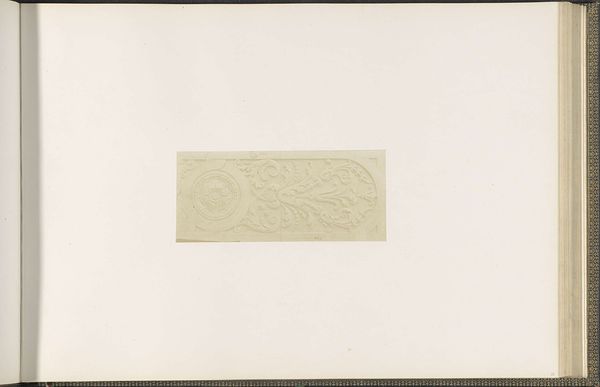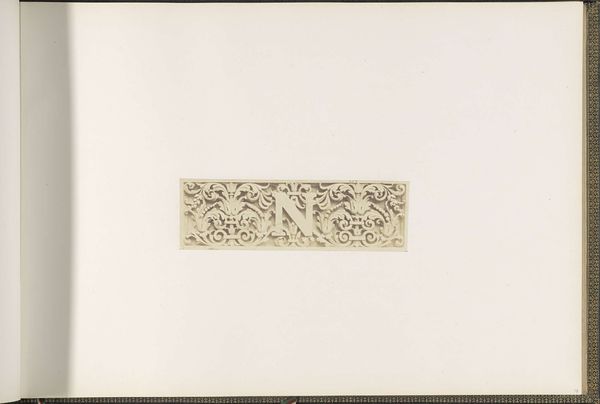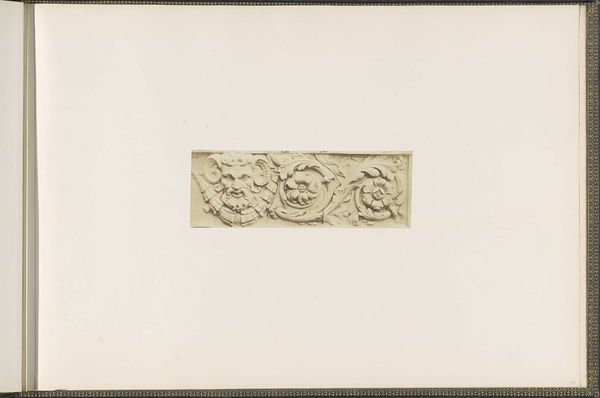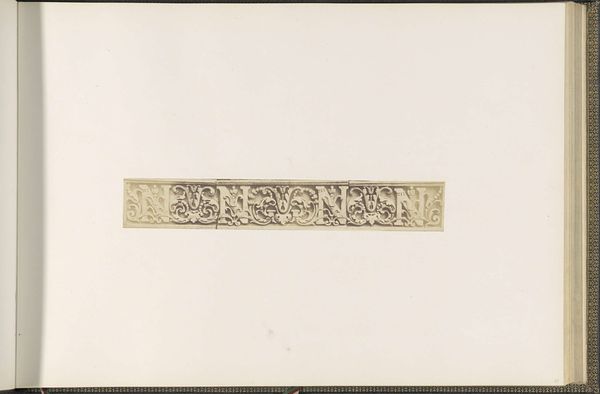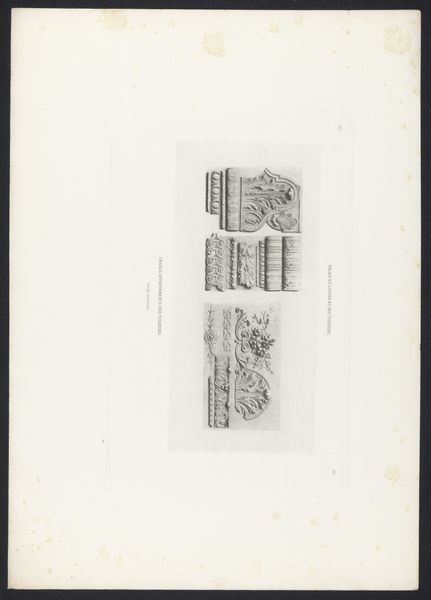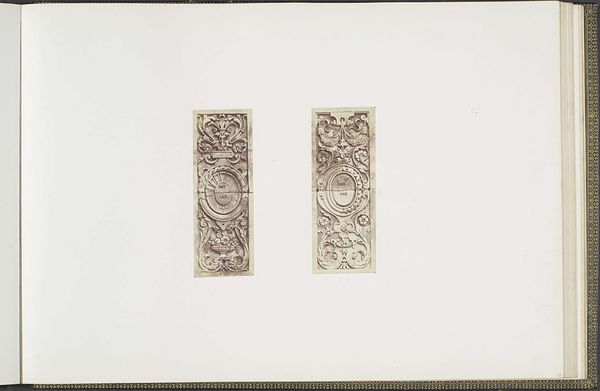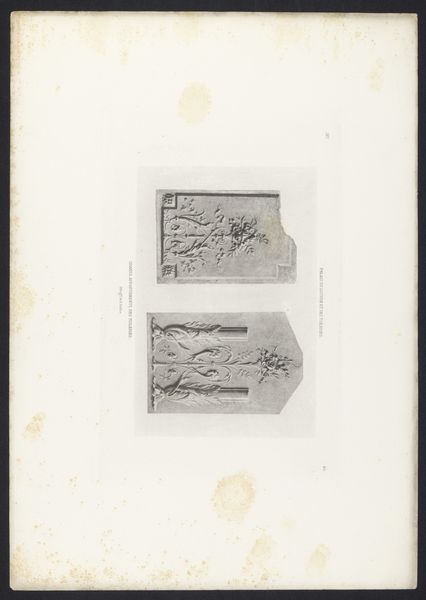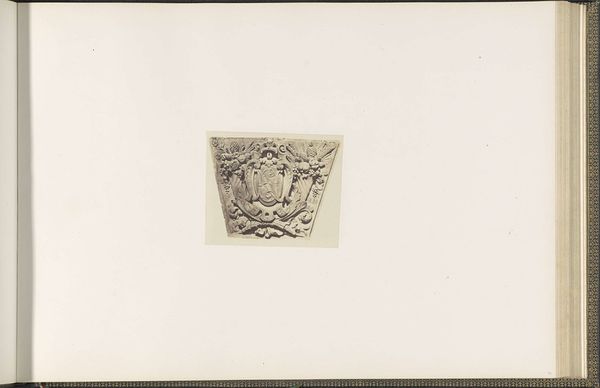
Gipsmodellen voor gevelversieringen op de Bibliothèque Impériale van het Palais du Louvre c. 1855 - 1857
0:00
0:00
edouardbaldus
Rijksmuseum
drawing, print, paper, engraving
#
drawing
#
neoclacissism
# print
#
classical-realism
#
paper
#
form
#
geometric
#
line
#
history-painting
#
engraving
Dimensions: height 376 mm, width 523 mm
Copyright: Rijks Museum: Open Domain
Curator: Take a look at this fascinating print currently held at the Rijksmuseum. It's entitled "Gipsmodellen voor gevelversieringen op de Bibliothèque Impériale van het Palais du Louvre," attributed to Edouard Baldus and dating from around 1855 to 1857. Editor: My first impression is one of classical restraint—these ornaments feel deliberately subdued, like a whisper of grandeur rather than a shout. The repetition of forms invites the eye to explore their geometric underpinnings. Curator: Indeed. What's significant here is how Baldus documented these plaster models meant for exterior decoration on the Louvre's Bibliothèque Impériale. This institution stood as a symbol of the Second Empire's intellectual ambitions, and architectural embellishments like these reinforced a particular image of power and continuity with the past. These designs weren't arbitrary; they signaled France's embrace of classical ideals and its aspiration to cultural dominance. Editor: The precision of line is striking. The eye traces each volute, each acanthus leaf, and recognizes the careful balance achieved within these contained rectangles. It almost feels like studying musical scores. The engravings isolate each design—like studying modules, each complete, but part of a grander, unrealized score. Curator: Absolutely. The formalism you describe perfectly encapsulates the political agenda. These architectural details helped solidify Napoleon III's regime by linking it to a noble, erudite past. It uses what we now call neoclassicism. It wasn't just about aesthetics; it was about projecting a certain narrative of imperial legitimacy. The choice of historical references communicated authority. Editor: Yet there is also a sense of fragility captured in the medium itself; they are presented in a drawing as copies of plaster models rather than, say, stone carvings. Curator: I agree. Consider the political context. This period witnessed significant social unrest and challenges to imperial rule. Art was strategically employed to maintain an illusion of stability. The irony is potent—decorative moldings were used to mask sociopolitical fracture, the tension in the Roman numerals almost telling us how to decode the system's fragility. Editor: These miniature studies open up complex issues around the relationship between power and display. Curator: Precisely! The artwork operates as an artifact of cultural history that tells us much more than classical emulation. Editor: A study of line becomes a commentary on social power. Curator: And history whispers where one expects pomp.
Comments
No comments
Be the first to comment and join the conversation on the ultimate creative platform.
